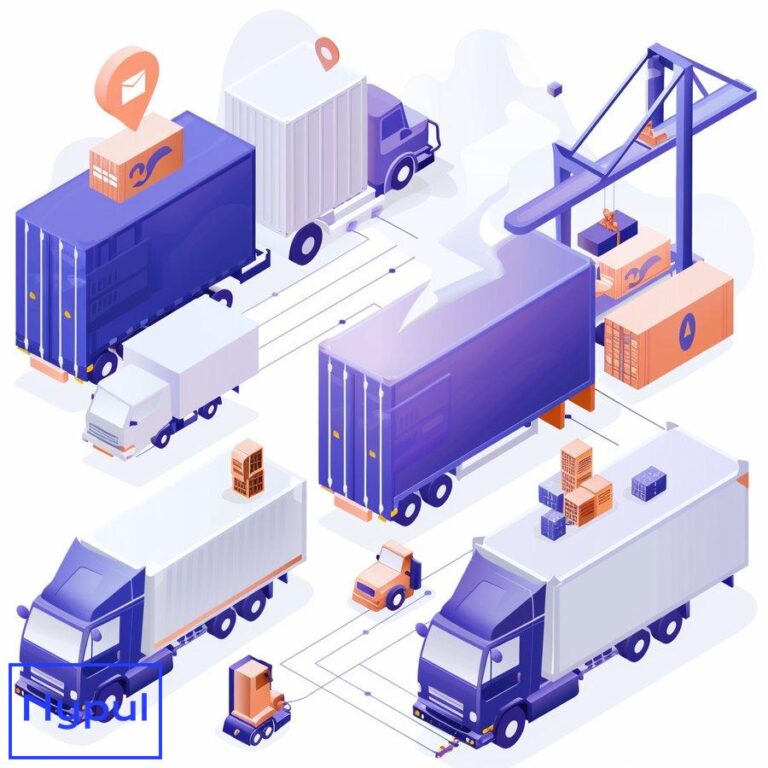How Do You Reduce Port Congestion
What is port congestion and why does it matter?
Port congestion refers to the situation where ports experience an overwhelming volume of incoming and outgoing cargo, leading to significant delays in the loading and unloading of vessels. This phenomenon is not merely an operational inconvenience; it has far-reaching implications for global trade, supply chain efficiency, and economic stability.
Understanding Port Congestion
Port congestion typically arises from a combination of factors, including:
-
Increased Trade Volume: A surge in global trade can quickly overwhelm port facilities, causing delays in processing cargo.
-
Labor Shortages: Insufficient skilled labor can slow down the loading and unloading processes, exacerbating congestion.
-
Infrastructure Limitations: Outdated or insufficient port infrastructure can hinder operational efficiency, leading to bottlenecks.
-
Regulatory Hurdles: Customs and regulatory procedures can introduce additional delays, complicating the movement of goods.
These factors create a ripple effect throughout the supply chain, impacting not only shipping companies but also manufacturers, retailers, and consumers. The direct consequences of port congestion include increased shipping costs, longer delivery times, and lost business opportunities.
Economic Impact of Port Congestion
The economic implications of port congestion are profound. Delays in cargo movement can lead to increased costs for shipping companies, which often translates to higher prices for consumers. Additionally, prolonged congestion can disrupt just-in-time inventory systems, causing production halts and further losses for businesses.
The congestion crisis peaked during the COVID-19 pandemic, where ports like Los Angeles and Long Beach became infamous for their long queues of vessels waiting to unload. This situation served as a wake-up call, highlighting the need for effective congestion management strategies.
How can immediate strategies provide congestion relief?
Immediate strategies for alleviating port congestion focus on optimizing existing operations and resources. These strategies aim to provide quick relief while longer-term solutions are developed and implemented.
Short-Term Leasing of Off-Site Storage
One effective immediate strategy is the implementation of short-term leases for off-site storage facilities. This approach allows ports to free up valuable space for incoming shipments while simultaneously accelerating the movement of empty containers. By reducing the number of empty containers occupying terminal space, ports can improve their operational efficiency.

Partnering with Trucking Companies
Collaboration with trucking companies can also alleviate congestion. By establishing partnerships, ports can facilitate the retrieval of containers directly from designated off-terminal yards. This strategy helps maintain the flow of cargo and reduces the burden on port facilities.
Utilizing Alternative Shipping Routes
In response to congestion, many shipping companies are exploring alternative shipping routes. Although these routes may incur higher costs, they can provide a more reliable solution compared to the delays associated with congested ports.
Implementing Real-Time Visibility Solutions
The deployment of real-time cargo tracking systems is essential for improving visibility into cargo movement. These systems allow stakeholders to monitor the location of containers, enabling better planning and coordination. Increased visibility can significantly reduce wait times and improve overall efficiency.
Forecasting and Demand Planning
Accurate demand forecasting and planning are vital for reducing reliance on congested ports. By dedicating more resources to forecasting, organizations can better manage their supply chains and avoid bottlenecks.
Summary of Immediate Strategies
| Strategy | Description |
|---|---|
| Short-Term Leasing | Free up space for incoming shipments by leasing off-site storage. |
| Partnering with Trucking Companies | Retrieve containers directly from off-terminal yards to maintain cargo flow. |
| Utilizing Alternative Shipping Routes | Explore less congested routes to ensure timely delivery. |
| Implementing Real-Time Visibility | Use tracking systems for better cargo movement monitoring. |
| Forecasting and Demand Planning | Improve planning to reduce reliance on congested ports. |
These immediate strategies, when implemented effectively, can provide much-needed relief from port congestion while laying the groundwork for more sustainable long-term solutions.
What technological solutions can reduce port congestion?

Technological advancements play a crucial role in addressing port congestion by enhancing operational efficiency and improving communication among stakeholders.
Terminal Operating Systems (TOS)
Terminal Operating Systems (TOS) are powerful tools that can significantly enhance port operations. A well-designed TOS allows port operators to monitor and manage terminal activities in real time, leading to improved productivity and reduced congestion.
Benefits of TOS
-
Quick Issue Identification: TOS enables operators to identify operational issues promptly, transforming port operations from a reactive to a proactive model.
-
Streamlined Planning: Automation in vessel planning and resource allocation minimizes errors and enhances the utilization of terminal assets.
-
Maximized Yard Space: Smart graphical planning tools optimize yard management, improving space utilization and reducing idle times.
Automation in Cargo Handling
Automation technologies, such as automated cranes and vehicles, can drastically reduce the time required to move containers. By eliminating time-consuming manual processes, ports can handle a higher volume of cargo, thereby alleviating congestion.
Data Analytics and Visualization
Advanced data analytics and visualization tools provide insights into port operations, allowing operators to identify patterns and potential bottlenecks. By leveraging these insights, ports can implement corrective actions before delays escalate.
Predictive Maintenance
Predictive maintenance technologies help ports manage equipment more effectively. By monitoring equipment conditions and predicting failures before they occur, ports can reduce downtime and improve operational efficiency.
Real-Time Communication Tools
Effective communication among stakeholders is essential for smooth operations. Real-time communication tools facilitate collaboration between port authorities, shipping companies, and truck operators, ensuring that everyone is informed about cargo status and potential delays.
Summary of Technological Solutions
| Technology | Description |
|---|---|
| Terminal Operating Systems (TOS) | Enhance monitoring and management of terminal activities. |
| Automation in Cargo Handling | Reduce time for container movement through automated systems. |
| Data Analytics and Visualization | Provide insights for identifying patterns and bottlenecks. |
| Predictive Maintenance | Monitor equipment conditions to prevent downtime. |
| Real-Time Communication Tools | Facilitate collaboration among stakeholders for efficient operations. |
The integration of these technological solutions can significantly mitigate port congestion, leading to smoother operations and improved supply chain efficiency.
How do infrastructure improvements address congestion issues?
Infrastructure improvements are fundamental to addressing the root causes of port congestion. Upgrading and expanding port facilities can enhance capacity and efficiency, reducing delays and improving overall performance.
Expanding Port Capacity
One of the most effective ways to alleviate congestion is to expand port capacity. This can involve constructing new berths, increasing storage space, and enhancing loading and unloading facilities.

Case Example: Port of Los Angeles
The Port of Los Angeles has undertaken significant expansion projects to accommodate growing trade volumes. By adding new berths and improving cargo handling equipment, the port has increased its capacity and reduced congestion.
Upgrading Transportation Links
Improving transportation links to and from the port is essential for facilitating the smooth movement of goods. Investments in road and rail infrastructure can enhance connectivity, allowing for quicker evacuation of containers and reducing bottlenecks.
Implementing Smart Port Technologies
Smart port technologies, such as Internet of Things (IoT) devices and sensors, can optimize operations by providing real-time data on port activities. These technologies enable better resource allocation and enhance decision-making processes.
Enhancing Customs and Regulatory Processes
Streamlining customs and regulatory processes can significantly reduce delays at the port. Implementing digital solutions for documentation and compliance can expedite cargo clearance and improve overall efficiency.
Summary of Infrastructure Improvements
| Improvement | Description |
|---|---|
| Expanding Port Capacity | Construct new berths and enhance cargo handling facilities. |
| Upgrading Transportation Links | Improve road and rail infrastructure for better connectivity. |
| Implementing Smart Port Technologies | Use IoT devices for real-time data on port activities. |
| Enhancing Customs Processes | Streamline documentation and compliance for faster cargo clearance. |
Investing in infrastructure improvements is essential for creating a more efficient port environment, ultimately reducing congestion and enhancing global trade.
Why is collaboration crucial in reducing port congestion?
Collaboration among various stakeholders in the supply chain is vital for effectively addressing port congestion. By working together, ports, shipping companies, and logistics providers can develop comprehensive strategies to mitigate congestion.
Building Partnerships
Establishing partnerships between ports and shipping companies can facilitate better planning and coordination. These partnerships enable stakeholders to share information about cargo movements, leading to more efficient operations.
Engaging Third-Party Logistics Providers
Third-party logistics providers (3PLs) possess valuable knowledge about port operations and can help shippers navigate congestion challenges. By leveraging their expertise, companies can identify alternative shipping solutions and improve overall supply chain efficiency.
Coordinating with Regulatory Authorities
Collaboration with regulatory authorities is essential for streamlining customs processes and reducing delays. By engaging with these authorities, ports can advocate for policies that enhance operational efficiency and minimize congestion.
Information Sharing Platforms
Creating information-sharing platforms among stakeholders can improve visibility into cargo movements and port activities. These platforms enable real-time communication, allowing stakeholders to respond quickly to changing conditions and potential bottlenecks.
Summary of Collaboration Strategies
| Strategy | Description |
|---|---|
| Building Partnerships | Foster relationships between ports and shipping companies for better coordination. |
| Engaging Third-Party Logistics | Utilize 3PL expertise to navigate congestion challenges. |
| Coordinating with Regulatory Authorities | Advocate for policies that enhance operational efficiency. |
| Information Sharing Platforms | Create platforms for real-time communication and visibility. |
Collaboration is a key component in reducing port congestion, as it allows stakeholders to work together towards common goals and develop effective solutions.
What policy and regulatory measures can help alleviate congestion?
Effective policy and regulatory measures are essential for addressing the systemic issues that contribute to port congestion. By implementing supportive policies, governments and port authorities can create an environment conducive to efficient operations.
Streamlining Customs Procedures
One of the most impactful measures is the streamlining of customs procedures. Simplifying documentation requirements and implementing digital solutions can expedite cargo clearance, reducing delays at the port.
Incentivizing Infrastructure Investments
Governments can incentivize investments in port infrastructure by providing grants, tax breaks, or low-interest loans. These incentives encourage port authorities and private companies to invest in capacity enhancements and modern technologies.
Establishing Performance Metrics
Setting clear performance metrics for port operations can help identify areas for improvement. By monitoring key performance indicators (KPIs), port authorities can assess the effectiveness of congestion management strategies and make necessary adjustments.
Promoting Sustainable Practices
Encouraging sustainable practices in port operations can also alleviate congestion. Implementing green initiatives, such as reducing emissions and promoting efficient energy use, can enhance overall operational efficiency and reduce delays.
Summary of Policy Measures
| Policy Measure | Description |
|---|---|
| Streamlining Customs Procedures | Simplify documentation and implement digital solutions for clearance. |
| Incentivizing Infrastructure Investments | Provide grants and loans to encourage capacity enhancements. |
| Establishing Performance Metrics | Monitor KPIs to assess and improve congestion management strategies. |
| Promoting Sustainable Practices | Implement green initiatives to enhance operational efficiency. |
Implementing these policy and regulatory measures can create a supportive environment for reducing port congestion and enhancing global trade.
How can ports implement effective long-term planning?
Long-term planning is essential for addressing the challenges of port congestion sustainably. By developing comprehensive strategies, ports can enhance their capacity and efficiency over time.
Conducting Comprehensive Assessments
Ports should conduct comprehensive assessments of their current operations and infrastructure. This analysis helps identify bottlenecks and areas for improvement, providing a foundation for effective long-term planning.

Engaging Stakeholders in the Planning Process
Involving stakeholders in the planning process is crucial for developing effective strategies. By engaging shipping companies, logistics providers, and regulatory authorities, ports can gain valuable insights and foster collaboration.
Developing a Strategic Vision
Establishing a strategic vision for the port’s future is essential. This vision should outline goals for capacity expansion, technological advancements, and operational efficiency, guiding decision-making processes.
Investing in Training and Development
Investing in training and development for port personnel is vital for ensuring operational efficiency. Providing ongoing education and skill development helps staff adapt to new technologies and processes.
Summary of Long-Term Planning Strategies
| Strategy | Description |
|---|---|
| Conducting Comprehensive Assessments | Analyze current operations to identify areas for improvement. |
| Engaging Stakeholders | Involve shipping companies and regulatory authorities in planning. |
| Developing a Strategic Vision | Establish goals for capacity expansion and operational efficiency. |
| Investing in Training and Development | Provide ongoing education for port personnel. |
Effective long-term planning is essential for creating a resilient port environment that can adapt to changing trade dynamics and reduce congestion.
Case Studies: Successful Congestion Reduction
Examining successful case studies provides valuable insights into effective strategies for reducing port congestion.
Port of Rotterdam
The Port of Rotterdam has implemented a series of innovative strategies to enhance operational efficiency and reduce congestion. These include:
-
Digitalization Initiatives: The port has invested in digital solutions for cargo tracking and management, improving visibility and coordination among stakeholders.
-
Sustainable Practices: The port promotes sustainable practices, including the use of electric vehicles and renewable energy sources, enhancing overall efficiency.
Port of Singapore
The Port of Singapore is renowned for its efficient operations and has implemented several strategies to mitigate congestion:
-
Automation Technologies: The port has adopted advanced automation technologies, such as automated cranes and vehicles, to streamline cargo handling processes.
-
Collaborative Planning: Engaging stakeholders in collaborative planning has allowed the port to optimize operations and reduce delays.
Summary of Case Studies
| Case Study | Strategies Implemented |
|---|---|
| Port of Rotterdam | Digitalization initiatives and sustainable practices. |
| Port of Singapore | Automation technologies and collaborative planning. |
These case studies illustrate the effectiveness of strategic initiatives in reducing port congestion and enhancing operational efficiency.
In conclusion, addressing port congestion requires a multifaceted approach that combines immediate strategies, technological solutions, infrastructure improvements, collaboration, policy measures, long-term planning, and learning from successful case studies. By implementing these strategies, ports can enhance their efficiency, reduce delays, and support the smooth flow of global trade.




